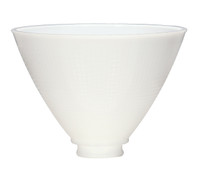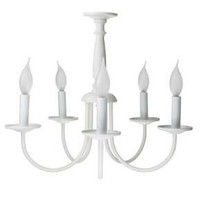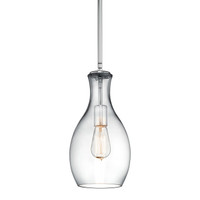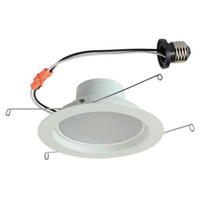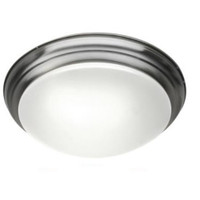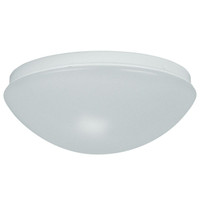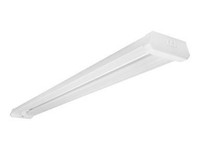-

-

-

-

-
-
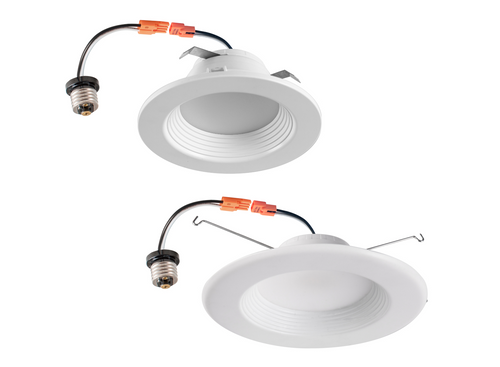
-

Halco Lighting Technologies
Halco Lighting Technologies FSDLG4FR8/CCT/LED 4" FIELD SELECTABLE GIMBAL DOWNLIGHT RETROFIT 8W 2700K-5000K DIMMABLE
Add to Cart$14.25 -

-

-

-

Halco Lighting Technologies
Halco Lighting Technologies DL6FR7/927/ECO/277V/OW/LED2 89052 5/6 Retrofit Downlight Ral1013 120-277V 7W 2700K Non-Dimmable DISCONTINUED
Add to Cart$999.00 -

Halco Lighting Technologies
Halco Lighting Technologies RDL6-RT-BT-BK 87961 ProLED Retrofit Downlight 6 inch Round Replacable Baffle Trim Black
Add to Cart$5.79

Ceiling Lights
Ceiling Lights for the Home Buyer's Guide
With such a wide variety of styles to choose from, ceiling lighting can be a challenge. Selecting the right fixture involves considering the effects of layers of light and lighting design elements that can be a little more complicated than simply choosing a favorite look. Narrowing down the differences between ceiling lights ensures you’ll find the right fixture for your space.
How to Choose the Right Ceiling Light
To create a comfortable room, the lighting should spread around the area to reach the corners and most often used places. Because each part of a room will be used differently, there are no one-size-fits-all lighting fixtures. An effective lighting solution for a room may require multiple light sources to fully take advantage of the space.
One way this is achieved is by creating a lighting plan that relies on different layers of light.
- Ambient lighting is the background light offering an even spread of illumination throughout the space.
- The next layer is accent lighting, which calls attention to specific features within the room, such as artwork or backlit shelving.
- Utilize task lighting for finer, detail-oriented workspaces like office desks or kitchen countertops in need of brighter light.
Each layer provides a specific type of light to minimize or manipulate brightness and shadow, adding easier visibility and depth.
What Are Ceiling Lights?
There are ceiling-mounted light fixtures of every shape, finish, and size. While installed overhead, recessed lights, pendants, and chandeliers each stand out in style, and their unique heights and characteristic features earn them their own categories. You can read more about pendant lights and chandeliers in our other buying guides.
Ceiling lights specifically refer to flush and semi-flush ceiling fixtures.
- Flush ceiling lights are not inset and do not hang down. Instead, they are installed with very little gap between the ceiling and the body of the light fixture.
- Semi-flush fixtures hang just below the ceiling. They share the narrower profile of the flush mount and preserve clearance space under the fixture while offering the look of a short chandelier.
Also called close to ceiling lights or overhead lights, flush and semi-flush fixtures cast an ambient light to illuminate a room or hallway. They are a reliable single-lightsource for a small room, or as a foundation when used as part of a comprehensive lighting solution.
The shades cast light downward to allow a wide spread and cover a larger area. The amount of light and brightness will depend on the type of diffuser shade the fixture uses. Some semi-flush lights also provide a reflective glow of light against the ceiling. The extra space between the shade and the ceiling can produce an attractive accent light to emphasize the design of the light fixture or the room itself.
Styles of Ceiling Lights
Close to ceiling lights are not limited in size or shape because of their specific installation method. They are instantly recognizable in any home, and range from classic and traditional globe styles to more unique lines and materials. The shade helps define the style of the ceiling light and is often made of frosted glass or another heat-resistant light diffuser. There’s a look for every room and design theme.
Some of the styles to look for with ceiling lights include the familiar bowl shape. These dome-shaped shades rest against the ceiling and can spread light around the room below. They can be found in round or oval dimensions, or even have pointed square corners.
The urn style ceiling light takes the rounded bowl ceiling light and exaggerates the dome to make it deeper at the center point. Bowl and urn ceiling lights are often decorated with transparent etchings or other designs to help refract the light in different ways, and may offer creative use of shadows.
The drum style ceiling light resembles a drum, with a shade that creates a decorative, bright wall around the interior bulbs. The lighting can emanate out from all sides, or as more focused up-and-down lighting, depending on the thickness of the shade.
Other styles of ceiling lights include the traditional, characteristic lantern, with solid corner frames that cast faint shadows. Candle-style bulbs can add to the rustic vibe of lanterns, or be incorporated in many unique designs.
Choose the Right Size Light to Fit the Room
In addition to the layers of light, there are reliable placement standards to follow to keep your lighting functional while looking professionally designed. These requirements can help determine the height of the ceiling light itself.
One of the most important considerations when choosing close to ceiling lighting is the walking space available under the fixture.
- The minimum clearance below the lowest point of a flush or semi-flush ceiling light is 7 feet.
- If the light is in an entryway or near the swing of a doorway, there should be at least 6 inches clearance between the top of the door and the bottom edge of the fixture.
Professional interior designs utilize additional, specific formulas to help select the correct size and dimension of ceiling lights to best fit the room.
To arrive at the ideal height of the ceiling light:
- Measure the room height, in feet.
- To determine the minimum height, multiply the room height by 2.5. Record the total as inches, rather than feet.
- To determine the maximum height, multiply the room height again, this time by 3, and record it as inches.
- Select a ceiling light that is within the range of the minimum and maximum.
For instance, for a room that has a height of 8 feet, the height for a flush or semi-flush ceiling light could be between 20” and 24” tall when installed directly against the ceiling.
It is a similar process to find the possible dimensions of close to ceiling lighting for a hallway. Rather than working with the height, however, you’ll need to know the hallway width. As a math formula, it would look something like this:
Hallway width (in feet) x 2 (inches) = Minimum ceiling light diameter (inches)
and
Hallway width (in feet) x 2.5 (inches) = Maximum ceiling light diameter (inches)
As an example, a 4 foot wide hallway could accommodate an 8 to 10 inch diameter ceiling light.
The wide open space of an entire room can allow for a larger light than a hallway, and the formula is slightly different as a result.
Room Width (in feet) + Room Length (in feet) = Maximum ceiling light diameter (inches)
To find the diameter of a ceiling light for a larger room, measure the length and width of the room. Add the results. That number, in inches, is the maximum diameter for the ceiling light. For a room 10 feet wide by 10 feet long, then, the diameter of the ceiling light would need to be no more than 20 inches.
Following these easy sizing suggestions will improve the fit of the ceiling light in your space, and ensure the placement matches ADA certifications.
Choosing Ceiling Light Location
Quality lights are UL rated for their safest conditions. Underwriters Laboratories is an independent company that verifies safe operating conditions for electronics and other products. For lighting fixtures, they evaluate whether the fixture can perform safely in dry, damp, or wet conditions.
Most close to ceiling lights will need to be rated for either dry or damp conditions. UL Listed fixtures will be ideal in dry rooms, such as hallways, dining rooms, bedrooms, or family rooms. These dry-rated lights can also be installed in well-ventilated kitchens or bathrooms, where there will be no risk of moisture buildup on the wiring or other parts.
Ceiling lights rated for damp locations can be used in indoor/outdoor rooms, covered patios, and bathrooms, where they may be exposed to condensation. Damp-rated fixture locations should be protected from direct exposure to water, such as showerspray or rain. For lighting in shower enclosures or unprotected porch and patio overhangs, look for wet-rated ceiling lights.
Find the Perfect Ceiling Lighting
Ceiling lights are a useful element of any room’s straight-forward lighting solution. The hardest decision is choosing your favorite look. Knowing the options for size and the available features can help narrow down the style choices. Find the right features with the right look to match your space and enjoy comfortable, stylish living with a simple ceiling light change.
Top-Rated Home Ceiling Light Supplier
Lightingandsupplies.com is a lighting distributor of Indoor & Outdoor Commercial and Residential light fixtures and light bulbs. Based in the US, we carry the top LED lighting brands like EiKO, RAB Lighting, MaxLite, naturaLED, Westgate Lighting and more of the Top Lighting Manufacturers in the United States. We also carry a wide variety of Horticulture products by Hydrofarm, along with ceiling fans by RP Lighting+Fans and Emerson Ceiling Fans. Lightingandsupplies.com also provides rebate programs, expert lighting design advice, and lighting audits for large projects. As a wholesaler, authorized dealer and bulk distributor of lighting products, we take pride in our customer-focused 100% satisfaction guarantee and return policy.
For more information, call 888-325-4448 or email: info@lightingandsupplies.com.

